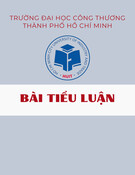
FOREIGN TRADE UNIVERSITY
HO CHI MINH CITY CAMPUS
---------***--------
GRADUATION THESIS
Major: International Business Economics
FACTORS INFLUENCING CONSUMERS' ADOPTION
INTENTION OF E-WALLET IN VINH LONG PROVINCE
Student: Tran Nguyen Lan Ngoc
Student ID: 1701015545
Class: K56CLC4
Intake: 56
Supervisor: Dr. Pham Hung Cuong
Ho Chi Minh City, December 2020
Thesis ID: 343


FOREIGN TRADE UNIVERSITY
HO CHI MINH CITY CAMPUS
SOCIALIST REPUBLIC OF VIETNAM
Independence - Freedom - Happiness
Ho Chi Minh City, ….../….../...............
DISSERTATION REMARKS
Student’s full name: Tran Nguyen Lan Ngoc Student code: 1701015545
Subject of the thesis: Factors influencing consumers' adoption intention of e-wallet in
Vinh Long province
Name of the supervisor: Dr. Pham Hung Cuong
Department: ....................................................................................................................
DETAILED REMARKS
1. Student’s attitude and progress during the dissertation schedule:
........................................................................................................................................
........................................................................................................................................
........................................................................................................................................
2. Responsiveness of scientific content to the research topic:
........................................................................................................................................
........................................................................................................................................
........................................................................................................................................
3. Format of the dissertation:
........................................................................................................................................
........................................................................................................................................
4. The supervisor proposes the score for student’s attitude and progress during the
dissertation schedule:
.........../1
Supervisor
(Signature with full name)


STATEMENT OF AUTHORSHIP
Except where reference is made in the text of the thesis, this thesis contains no
material published elsewhere or extracted in whole or in part from a thesis by which
I have qualified for or been awarded another degree or diploma.
No other person’s work has been used without due acknowledgements in the
thesis.
This thesis has not been submitted for the award of any degree or diploma in any
other tertiary institution.
Ho Chi Minh City, December 2020
Tran Nguyen Lan Ngoc

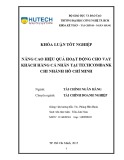
![Internet Banking tại Việt Nam: Bài thuyết trình [Mô tả/Đánh giá/Phân tích]](https://cdn.tailieu.vn/images/document/thumbnail/2017/20171210/nguyenhoa18101998/135x160/6311512883961.jpg)
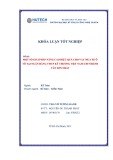

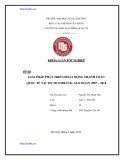

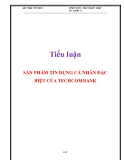



![Thẩm định dự án đầu tư Ngân hàng BIDV: Bài tiểu luận [chuẩn nhất]](https://cdn.tailieu.vn/images/document/thumbnail/2025/20251018/kimphuong1001/135x160/7231760775689.jpg)





